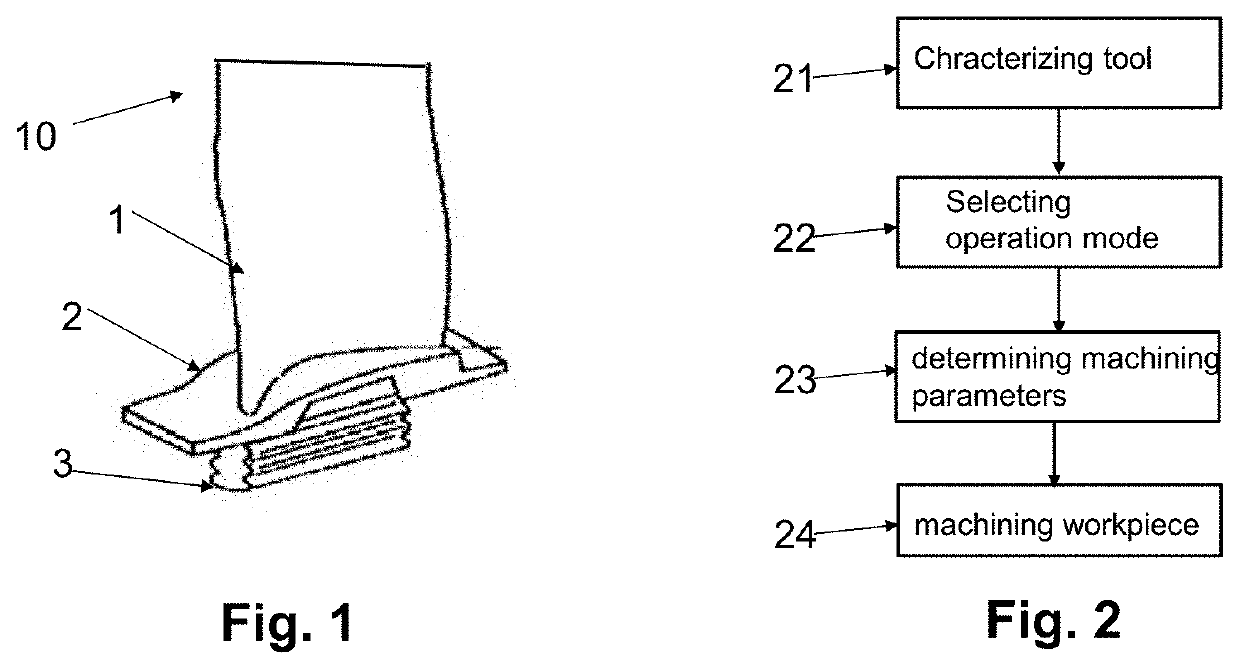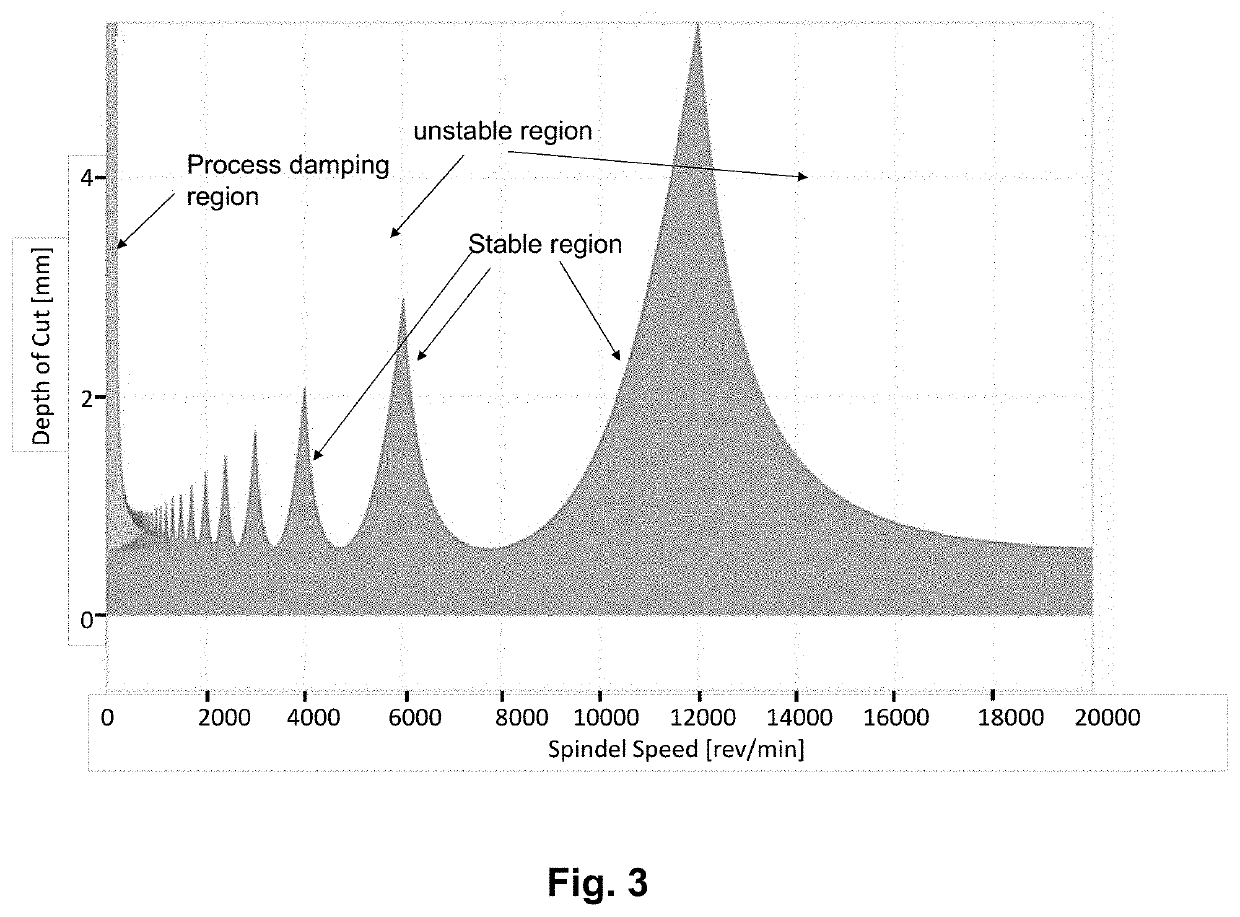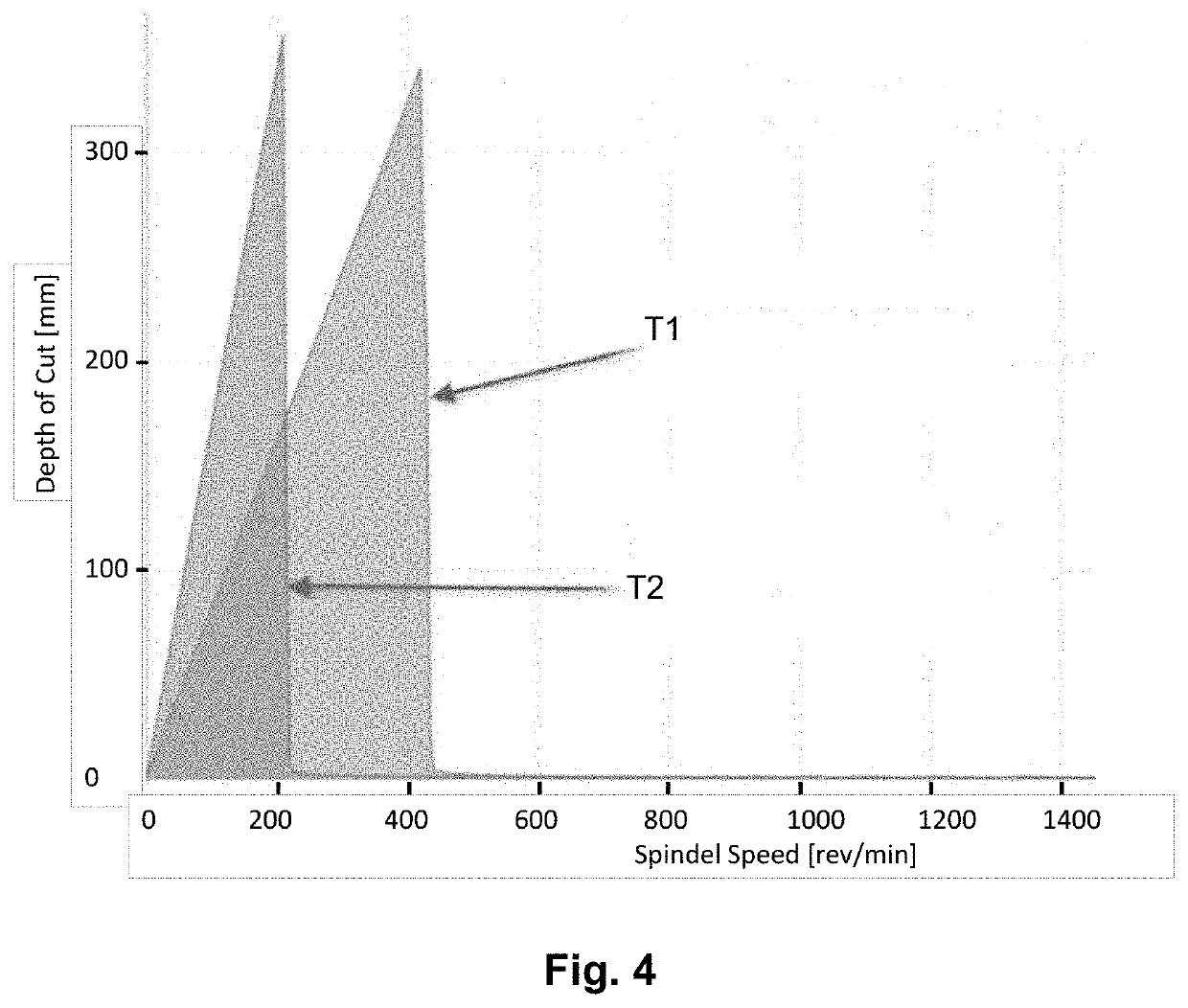Method for manufacturing a thin-walled part
a manufacturing method and thin-walled technology, applied in the direction of metal-working equipment, workpieces, milling equipment, etc., can solve the problems of long machining time, poor surface quality, long machining time, etc., and achieve the effect of reducing tool wear and improving machining efficiency
- Summary
- Abstract
- Description
- Claims
- Application Information
AI Technical Summary
Benefits of technology
Problems solved by technology
Method used
Image
Examples
Embodiment Construction
[0035]FIG. 1 illustrates a schematic of a single machined turbine blade 10 including an airfoil 1, a platform 2, and a blade root 3, which can be manufactured by the method of the present invention. However, the method of present invention is not limited to machine turbine blade and not limited to this particular shape of the turbine blade. For example, the turbine blade having additionally a shraud can also be machined by this method.
[0036]FIG. 2 shows the main steps included in the method of the present invention: characterizing a cutting tool 21, selecting an operation mode 22, determining machining parameter 23 and machining workpiece 24. Before milling the workpiece by a machine tool, at least one cutting tool used for the milling is characterized for example by a tap testing to identify the critical frequency range regarding the vibration to obtain stability lobes.
[0037]FIG. 3 shows the results of the conducted tap testing for two cutting tools T1 and T2 depicted in stability ...
PUM
 Login to View More
Login to View More Abstract
Description
Claims
Application Information
 Login to View More
Login to View More - R&D
- Intellectual Property
- Life Sciences
- Materials
- Tech Scout
- Unparalleled Data Quality
- Higher Quality Content
- 60% Fewer Hallucinations
Browse by: Latest US Patents, China's latest patents, Technical Efficacy Thesaurus, Application Domain, Technology Topic, Popular Technical Reports.
© 2025 PatSnap. All rights reserved.Legal|Privacy policy|Modern Slavery Act Transparency Statement|Sitemap|About US| Contact US: help@patsnap.com



